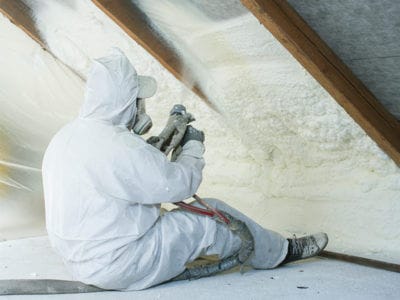
Detecting Propylene Oxide
Formula: C3H6O | CAS: 75-56-9
Protecting both people and the environment whilst meeting the operational needs of your business is paramount and if you have operations in the UK you will be well aware of the requirements of the Control of Substances Hazardous to Health (CoSHH) regulations and likewise the Code of Federal Regulations (CFR) in the US.
Similar legislation exists worldwide, the common theme being an onus on hazard identification, risk assessment and the provision of appropriate control measures.
The Basics of Detecting Propylene Oxide
Properties | Structure | Exposure
Propylene oxide is used in the production of polyethers (the primary component of polyurethane foams) and propylene glycol. Short-term exposure to propylene oxide by humans and animals can cause eye and respiratory tract irritation. Dermal contact can cause skin irritation and necrosis in humans. Propylene oxide is also a mild central nervous system (CNS) depressant in humans. The US Environmental Protection Agency (EPA) has classified propylene oxide as a Group B2, probable human carcinogen.
– US Environmental Protection Agency (EPA)
”Propylene oxide (PO) is a highly reactive chemical used as an intermediate for the production of numerous commercial materials. It reacts readily with compounds containing active hydrogen atoms such as alcohols, amines and acids. Its main derivatives include polyether polyols, propylene glycol (PG) and propylene glycol ethers but it has many other outlets.
I.C.I.S - Independant Commodity Inteligence Services
Propylene Oxide Exposure
Inhalation of air containing propylene oxide, ingestion of
contaminated food  or water, or by dermal contact with propylene oxide are all routes of exposure. Inhalation of propylene oxide can lead to breathing difficulties, irritation of the respiratory tract, accumulation of fluid in the lungs and pneumonia. Exposure to propylene oxide can affect the central nervous system with symptoms including headaches, dizziness, nausea and drowsiness all of which are common side effects of Volatile Organic Compound (VOC) exposure. Ingestion of propylene oxide can cause gastrointestinal irritation, vomiting, nausea and diarrhoea. Dermal contact can cause skin irritation, dermatitis and skin sensitisation. The International Agency for Research on Cancer has designated propylene oxide as a possible carcinogen. However, exposure to propylene oxide at normal background levels is unlikely to have any adverse effect on human health.
or water, or by dermal contact with propylene oxide are all routes of exposure. Inhalation of propylene oxide can lead to breathing difficulties, irritation of the respiratory tract, accumulation of fluid in the lungs and pneumonia. Exposure to propylene oxide can affect the central nervous system with symptoms including headaches, dizziness, nausea and drowsiness all of which are common side effects of Volatile Organic Compound (VOC) exposure. Ingestion of propylene oxide can cause gastrointestinal irritation, vomiting, nausea and diarrhoea. Dermal contact can cause skin irritation, dermatitis and skin sensitisation. The International Agency for Research on Cancer has designated propylene oxide as a possible carcinogen. However, exposure to propylene oxide at normal background levels is unlikely to have any adverse effect on human health.
– Health & Safety Executive (HSE)
Propylene Oxide Structure
Propylene oxide, also known as 2-Methyloxirane is a common VOC; it is an organic compound and is colourless and smells similar to ether. Propylene oxide has the chemicals formula C3H6O and unique numerical CAS number 75-56-9.
– Wikipedia (Propylene Oxide)
It is also a hydrocarbon as you can see from its chemical formula C3H6O represented diagrammatically here.
This compound is sometimes called 1,2-propylene oxide to distinguish it from its isomer 1,3-propylene oxide, better known as oxetane.
Propylene oxide is produced by the chlorohydrin process, where propylene is reacted with chlorine, or by the hydroperoxide process, where an organic hydroperoxide is used to epoxidize propylene. It is used primarily as an intermediate for the manufacture of polyether polyols in the production of polyurethane foams, and for the manufacture of propylene glycol in the production of unsaturated polyester resins.
Download our FREE Guide
“The Basics of Detecting Propylene Oxide”
The basics of detecting propylene oxide guide which can be downloaded below provides the reader with an in-depth balance of knowledge covering the main properties, structure and exposures of propylene oxide. Once the reader has finished this guide they will be able to determine the correct solution on detecting propylene oxide and the best way of limiting themselves to accidental exposure.










 United Kingdom
United Kingdom






